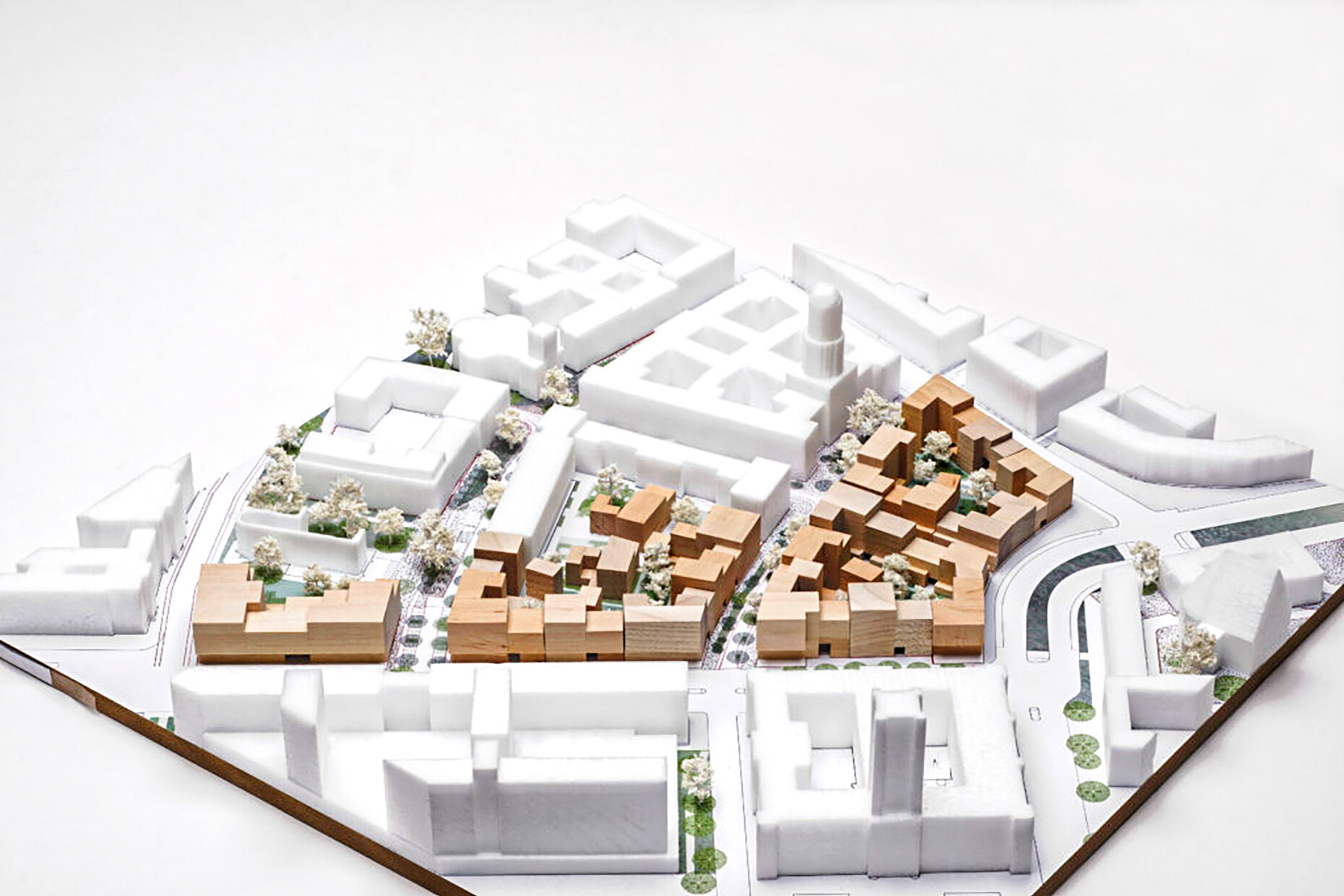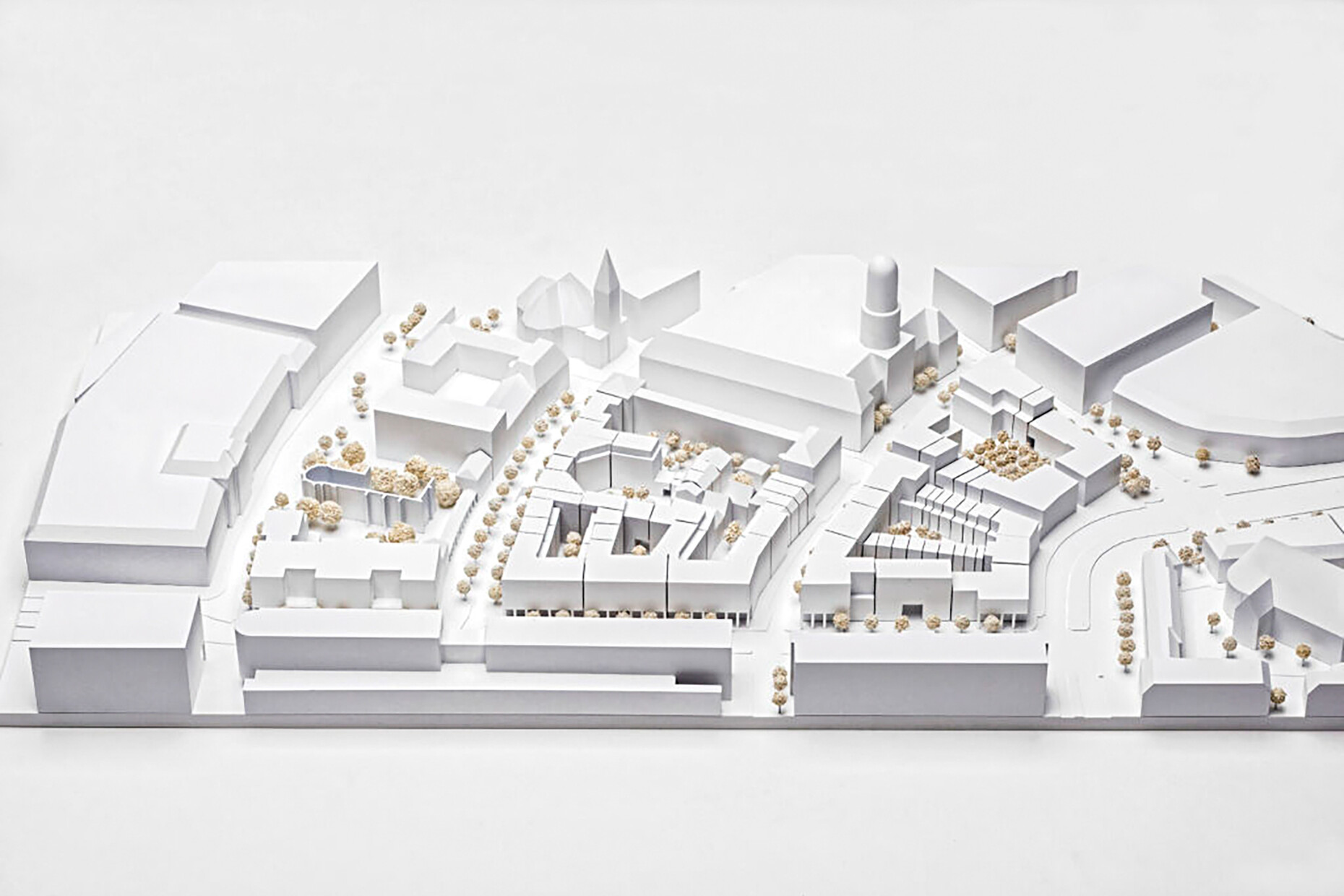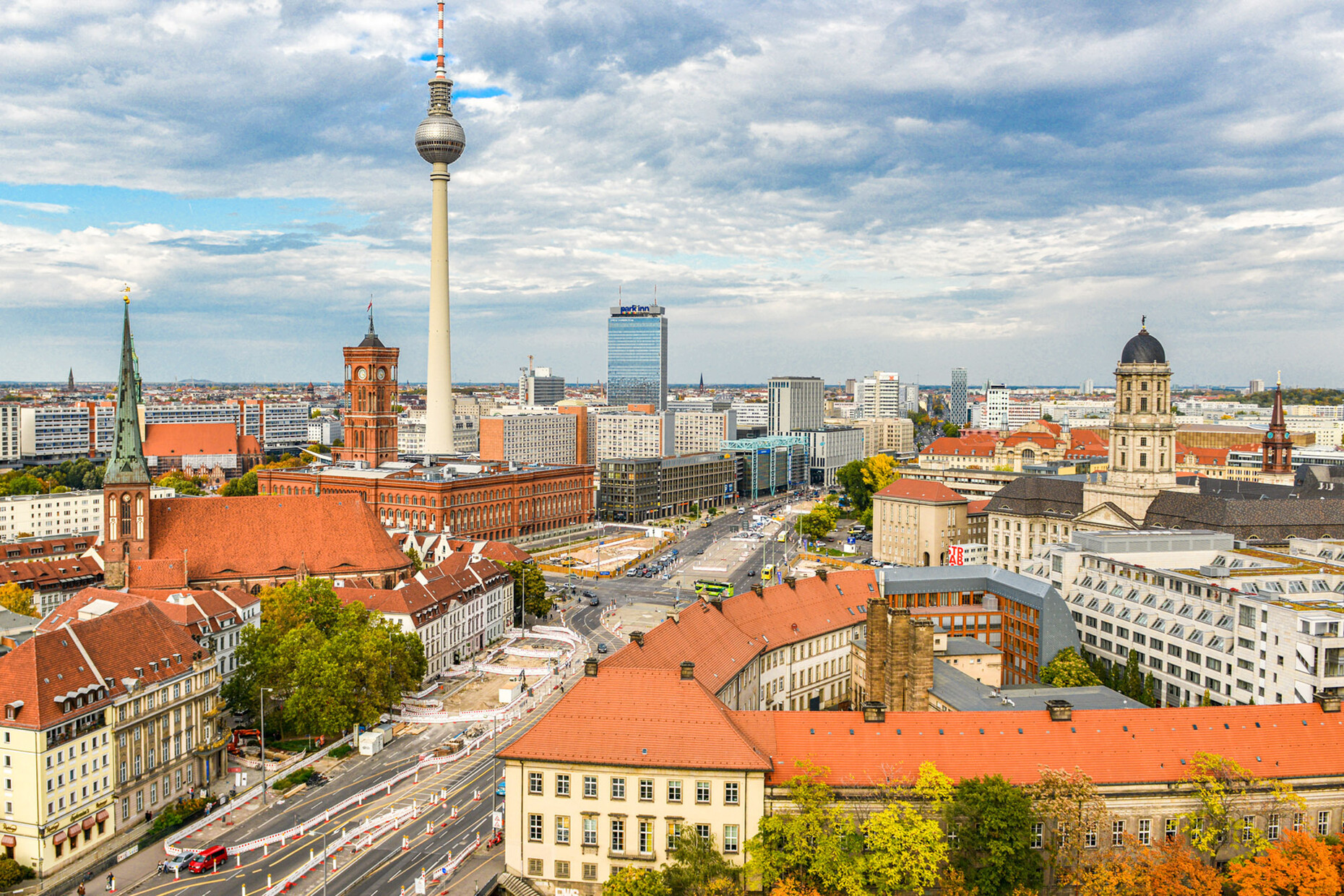Layers of the City
Alexander Russ: Ms Kahlfeldt, were you surprised by the strong reaction to your appointment as Senate Building Director?
Petra Kahlfeldt: Yes, I was very surprised, especially by the actual form and content of the criticism.
Could you elaborate on this?
Petra Kahlfeldt: Let's start at the beginning: At first there was an open letter in which the wish was expressed for a more transparent selection process for the position of Senate Building Director. This letter was signed by many colleagues – and I think it's absolutely right that architects and planners get involved with this. After that there was a second open letter, which was more about my person and had far fewer signatures. During this time, I received many messages from colleagues who made it clear to me that they did not support the second letter. I sometimes had the impression that the arguments I was hearing were not actually about me and had more to do with the new senate.
Why do you think the selection process is not transparent enough? This weakens your position from the outset, especially since there’s an accusation that you don't have the necessary experience for the job.
Petra Kahlfeldt: I don't see that as a weakness. And as far as the selection process is concerned, there's a law concerning this – the so-called Act Governing the Legal Status of Parliamentary State Secretaries – which regulates how directors are appointed. It provides a framework for a respective senator to select his or her own staff for a concrete execution of a government declaration.
What qualifies you for the job of Senate Building Director?
Petra Kahlfeldt: It's not an position you apply for; someone approaches you. In my case, it was Ms Giffey. She was looking for someone who knows Berlin well and has the necessary expertise to be able to get up to speed quickly and begin implementing the respective tasks without delay – in other words, someone who doesn't think ideologically but approaches things pragmatically, with know-how and experience. My architectural focus on the transformation of existing buildings appealed to her, i.e. working with the city's historical layers. I'm sure it also helped that I used to teach, and having experience with committees was important to her as well. In building, you have to bring together the interests of many different groups: those of urban society, those of the clients and politicians, and those of the administration. And then it's a matter of implementing the task of getting things built at a qualitatively high level that is in keeping with the structure of the city.
You were nevertheless recommended by someone. Can you tell us who that was?
Petra Kahlfeldt: I actually don't know who it was – and I never asked.
You just described yourself as being non-ideological. In Berlin it's well-known that architects have fallen into different camps, something that goes back to the era of Senate Building Director Hans Stimmann. How would you classify yourself?
Petra Kahlfeldt: Such camps certainly exist in Berlin, and some are very ideological, which became quite apparent during the debate about my person. And yet, our professional ethics should make it possible to have a certain diversity of opinion and an objective exchange of ideas.
Reconciling both camps was the approach your predecessor Regula Lüscher took. She came from outside Berlin and thus brought a certain neutrality with her. Now, however, you clearly belong to Hans Stimmann's camp, as evidenced, among other things, by your membership in the "Planungsgruppe Stadtkern" (City-Centre Planning Group). Can you understand why you’re being accused of a certain partisanship in this regard?
Petra Kahlfeldt: Yes, but only if you want to discuss the whole thing in a one-sided manner. My actions are not determined by ideology, but instead by my architectural stance. But this doesn't mean I want a homogeneous city. Everyone who knows me knows that diversity is important to me and that I actually live it.
There have been some fierce attacks, among others from Matthias Sauerbruch, a partner at Sauerbruch Hutton, who said he felt you were not fit for the position in an interview with Die Welt. How do you intend to have a dialogue with such colleagues?
Petra Kahlfeldt: He is entitled to his opinion. I don't hold grudges and I’ve had a good, collegial relationship with him in the past.
Earlier you mentioned working with the city’s historical layers. You've been accused of having a penchant for historicism, and you were also a member of the expert commission for the Humboldt Forum. Now you could argue that the Palace of the Republic, which was demolished to make way for the Humboldt Forum, was also one of the city's historical layers that reflected Berlin's history in the 20th century much better than a reconstructed palace. What's your position on this?
Petra Kahlfeldt: There was an intense, collective debate about this. At the time, I was the chairperson of the BDA (Association of German Architects) and we were in favour of neither the demolition of the Palace of the Republic nor the new construction of the Humboldt Forum. In this context, I would like to refer to Josef Paul Kleihues' critical reconstruction, i.e. a changing of the existing urban structure in order to reveal a city's historical layers. When the construction of the Humboldt Forum was being debated in the expert commission, I talked to him about it and he told me that in his opinion a new building could not do justice to the site in terms of urban planning. I was very concerned about that at the time. The commission then spent three years intensively discussing the issue. During the debate it eventually became evident that the urban layout of the Historische Mitte (the historic centre) at this location had developed from a spatial and structural dialogue with the Berlin Palace and that this particular building had shaped the cityscape accordingly.
How happy are you with the result? Is the building a success?
Petra Kahlfeldt: The whole thing was a very difficult task. I was also on the jury for the Humboldt Forum design competition and we voted unanimously for Franco Stella's design, because his entry solved the competition requirements best in terms of architecture and urban space.
But there were also many architectural firms that demonstratively did not take part in the competition for the Humboldt Forum.
Petra Kahlfeldt: Yes, that was a real shame, and, to be honest, I don't really understand why. Through their competition entries, architects from around Europe could have contributed to the debate. Incidentally, this also applies to the urban planning competition for the Molkenmarkt, where unfortunately only ten offices took part.
There were two first places in that competition. One went to the Danish office OS Arkitekter together with Czyborry Klingbeil Architekturwerkstatt, and the other to Bernd Albers and Silvia Malcovati. Bernd Albers works with you in the "Planungsgruppe Stadtkern". Do you have a favourite regarding the two first-place winners?
Petra Kahlfeldt: No, both designs meet the requirements of the development plan in a very convincing manner. Both offices analysed the public space in great detail and made typologically diverse proposals for the stipulated perimeter block development. A formal difference at the level of individual buildings resulted primarily from the logic of the way they want to build: OS Arkitekter and Czyborry Klingbeil Architekturwerkstatt have proposed wood as a building material, while Bernd Albers and Silvia Malcovati haven’t yet made a concrete proposal in this regard, which the development plan doesn't specify either. The jury commented on both entries: For example, the proposed forms of housing should be examined more closely with regard to different living models and the existing traffic load. The aim is to find the most compact and varied solutions to the different and diverse spatial situations in relation to the four blocks – and the designs have to fulfil this requirement. The largest part of the site is owned by the state of Berlin, which is the only way of creating affordable housing in the city.
The "Planwerk Innenstadt" developed under Hans Stimmann in the 1990s envisaged the privatisation of large parts of Berlin's city centre. How do you assess that in retrospect?
Petra Kahlfeldt: This is a very complex issue, and you have to differentiate accordingly. In 1950, 70 per cent of the property in the Historische Mitte (historic centre) was in state hands. This situation went back to the Weimar Republic, as well as to the Nazi dictatorship, when many properties were expropriated and nationalised. This then continued in the GDR. When Germany was divided, the Federal Republic (FRG) paid compensation for the expropriations that had occurred during the Nazi period, but the GDR did not – and that also applied to East Berlin. In 1994, after East and West Berlin were reunited, a law was passed to either restitute these nationalised properties to victim groups or compensate those groups financially by selling the properties. This concerned in particular Jewish families who had to emigrate during the Nazi period, as well as relatives of victims of the Wall. But the whole thing had nothing to do with Hans Stimmann. It was simply the legislation that was decided upon at the time, and it allowed for privatisation. The problem with implementing the law was that in the end, there was more compensation than restitution – and so many properties ended up in the hands of private owners and developers.
This also applies to the large-scale sale of social housing in the 1990s.
Petra Kahlfeldt: Yes, at that time the state of Berlin sold all its "silverware", i.e. its valuable assets, to rid itself of debt. Many municipalities took this path, which in retrospect proved to be a big mistake. When the public sector privatises its housing stock and its infrastructure, it becomes incapable of acting. Nevertheless, private actors should not be blamed for everything. They’re also part of our culture, have a right to do what they do and how they act, and they pursue their work with great commitment and dynamism. That’s quite different than the public sector, where the processes are often so protracted that many actors no longer want to get involved in the respective procedures.
The private actors also include creative people, such as the "Initiative Haus der Statistik". This is a group of artists and architects, who in 2015 appropriated the then vacant Haus der Statistik building near Alexanderplatz and transformed it into space for art, culture and social issues. How important do you find such places?
Petra Kahlfeldt: Enormously important, and to be honest, the great enthusiasm and passionate commitment reminds me of my student days at the beginning of the 1980s. That was the time of the squatters.
Were you part of this scene?
Petra Kahlfeldt: I wasn't a squatter, but those were the places where people met. Incidentally, I studied at the TU Berlin’s IWOS, the Institute for Housing and Urban Planning, which was politically very left-wing. There, in the so-called Hämer Quarter at Klausener Platz in Charlottenburg, we carried out participatory actions with tenants when the rest of Berlin didn't even know what citizen participation was. In the long run, however, I didn't just want to talk about social processes, but also to deal with concrete design and construction issues. That's why I spent some time during my main course of study in Florence, where I was able to work on architecture and then concentrate on design and construction in existing contexts.











